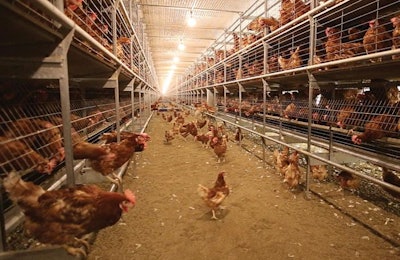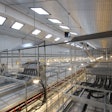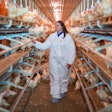
Cage-free egg purchase pledges made by major grocery and foodservice egg purchasers are triggering what could be $10 billion investment by U.S. egg producers in cage-free production systems over the next decade. Many of the cage-produced eggs sold in the U.S. are produced according to United Egg Producers (UEP) Certified animal welfare standards.
Possible updates to the UEP Certified program’s cage-free housing standards were discussed during the animal welfare committee briefing during the cooperative’s Annual Board Meeting and Executive Conference in Miami Beach, Florida, in October.
It was reported that the UEP scientific advisory committee is working on recommendations to be considered as standards for raising pullets that will be housed in cage-free environments as layers. In addition to this, the scientific advisory committee has told the animal welfare committee that it has identified three areas in the cage-free housing standards that may require revision or clarification.
Doors on cage-free systems
Some cage-free housing systems have doors on the front of the aviary or convertible (combi) enclosure which allow the hens to be confined within the system for training purposes or to facilitate vaccination. It was reported that the scientific advisory committee decided that doors on cage-free housing systems were acceptable if specific guidelines are followed and the enclosed space within the aviary met certain minimum requirements.
It was suggested by the scientific advisory committee that the doors only be closed when the flock is first introduced into the layer house and they only remain closed until the flock reaches a 50 percent rate of lay. After the birds are released out of the enclosed aviary structure, the hens can only be closed back in to facilitate procedures such as vaccination or for retraining of the hens if floor eggs exceed 2 percent of total lay.
It was proposed that the portion of the aviary that encloses the hens when the doors are closed must provide at least 6 inches of linear perch space and 108 square inches of floor per bird.
Increased litter space requirement
The space requirement for cage-free white hens is 144 square inches per bird. The scientific advisory committee has proposed that a minimum of 30 percent of the space provided for hens be in the litter or scratch area. This proposal was made in light of recent behavioral research in cage-free systems which has attempted to better understand flock “piling” behavior seen in some commercial operations.
Flock piling is defined as the occurrence of densely grouped clusters of hens, resulting from no obvious cause and occurring randomly throughout the day and flock cycle. In severe cases, flock piling can lead to smothering of some of the hens and, in some flocks, this can become a large portion of the total mortality the flock experiences during the lay cycle. It is hoped that providing 30 percent of the living area in the litter or scratch area will allow enough room to accomodate hens for dust bathing and foraging while preventing piling. Some convertible or combi systems, as currently configured, may provide greater than 70 percent of the living area for the birds within the system and not provide enough litter area to meet a 30 percent requirement.
Is the nest area floor space?
Many convertible or combi systems are essentially enriched cages with a door that opens. As such, they have been designed in ways that blend enriched cage and aviary components. For enriched cages, the nest area is considered to be part of the usable space for the birds. When calculating the space a system provides for the hens, the total interior dimensions of the enclosure are counted, including the nest.
Many aviary systems have nests that are closed at night, so the nest space isn’t counted toward the usable floor space for the birds. The scientific advisory committee has proposed that the nest area not be counted toward the hens’ usable living area for any cage-free system. If this is adopted as part of the UEP Certified program, it would result in slightly fewer hens housed in some convertible/combi systems as they are currently configured.
Can a cage-free layer housing system have a door?

















